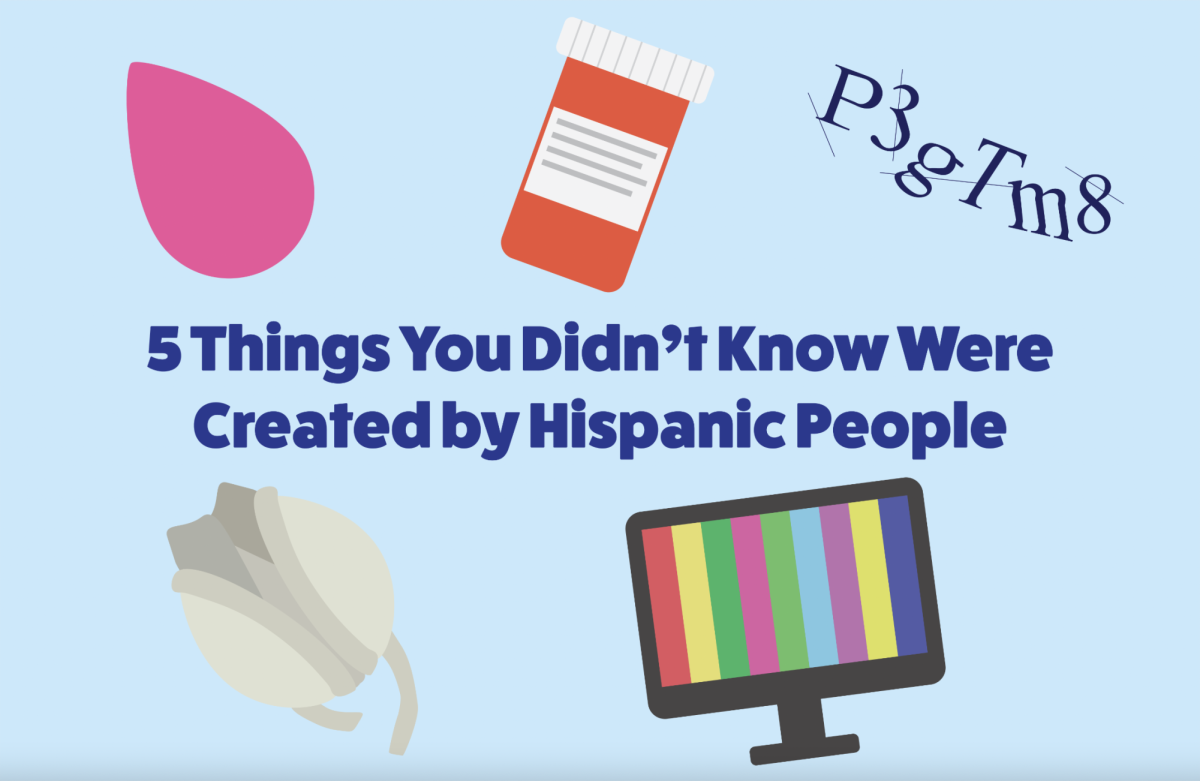National Hispanic Heritage month is celebrated every year from September 15th to October 15th, kicking off on the day Costa Rica, El Salvador, Guatemala, Honduras, and Nicaragua declared independence from Spain. Throughout the month, Chile, Mexico, and Belize celebrate their independence days as well.
Hispanics have played a vital role in shaping American culture today. To commemorate the end of Hispanic Heritage Month, here’s 5 things you may not know were created by Hispanics.
1. Beauty Blender
If you know anything about popular beauty trends, you might recognize the colorful sponges used to blend a variety of products onto the skin. Rea Ann Silva, a latina born in Los Angeles, first started her career in the beauty industry as a professional makeup artist and created the first prototype of the Beauty Blender while searching for a way to avoid using an airbrush to get the perfect finish on makeup for tv and movies. She began selling the sponge in boutiques, and it quickly blew up into a worldwide phenomenon. Nowadays, Beauty Blenders can be found in thousands of stores, and the brand produces various makeup products and tools aside from their signature sponge.
2. CAPTCHA
Have you ever tried to reach a website, but first are presented with a warped sequence of letters and numbers that you must retype? Or maybe a photo where you have to select all parts with a traffic light? Have you checked the “I am not a robot” box? Well these are all a part of CAPTCHA, which stands for Completely Automated Public Turing test to tell Computers and Humans Apart, and the purpose is to prevent spam on websites. CAPTCHA was partially created by Guatemalan Luis von Ahn. von Ahn was born in Guatemala City, Guatemala and moved to America at 18 to study at Duke University. In 2006, von Ahn was presented with a problem: spammers were flooding millions of emails with unwanted junk mail. von Ahn and others then came up with a solution: create a step that humans can complete, but computers can’t. von Ahn later invented reCAPTCHA, which helped digitize books by using characters too illegible for computers. ReCAPTCHA helped to digitize years of The New York Time archives. von Ahn also went on to become the inventor of the popular language-learning app Duolingo.
3. Artificial Heart
Though artificial hearts might seem groundbreaking today, the first artificial heart to be successfully used in a human was actually implanted in 1969. It was developed by Argentinian-born Domingo Santo Liotta. Liotta attended the National University of Córdoba, receiving a doctorate in medicine and surgery. His early experiences with artificial hearts involved animals, and as a result of these studies, he was hired by Baylor College as the director of the Artificial Heart program. The heart he invented was used in a patient with severe heart failure for three days before a human-donated heart became available.
4. Contraception Pill
Many people across the globe take contraceptive pills as a method of birth control or for its other benefits. The first synthesis of an oral contraceptive was performed by Mexican Luis E. Miramontes. He was born in Tepic, Nayarit, Mexico, and attended university at the Universidad Nacional Autónoma de México, where he later became a founding member of the Institute of Technology at the university. Miramontes worked under the supervision of Carl Dijerassi at Syntex Laboratory in Mexico City. While Dijerassi is often referred to as “Father of the Pill,” it was Miramontes who was the first to synthesize the pill, and Miramontes, Dijerassi, and scientist George Rosenkranz are listed on the patent as co-inventors.
5. Color Television
Today, color television is considered the norm, but in the 1960s, Mexican engineer Guillermo González Camarena made history with his invention of a color television system, called the trichromatic sequential field system. Camarena was born in Guadalajara, Mexico in 1917, and attended the National School of Engineers of the National Autonomous University of Mexico. His first color television system was patented in 1942, but was not used commercially because of competition with other systems that were in development at the time. Camarena’s desire for the public to enjoy color television led him to later develop the Simplified Bicolor System, which was more affordable. The first color broadcast in Mexico happened on January 21, 1963, using Camarena’s invention.














